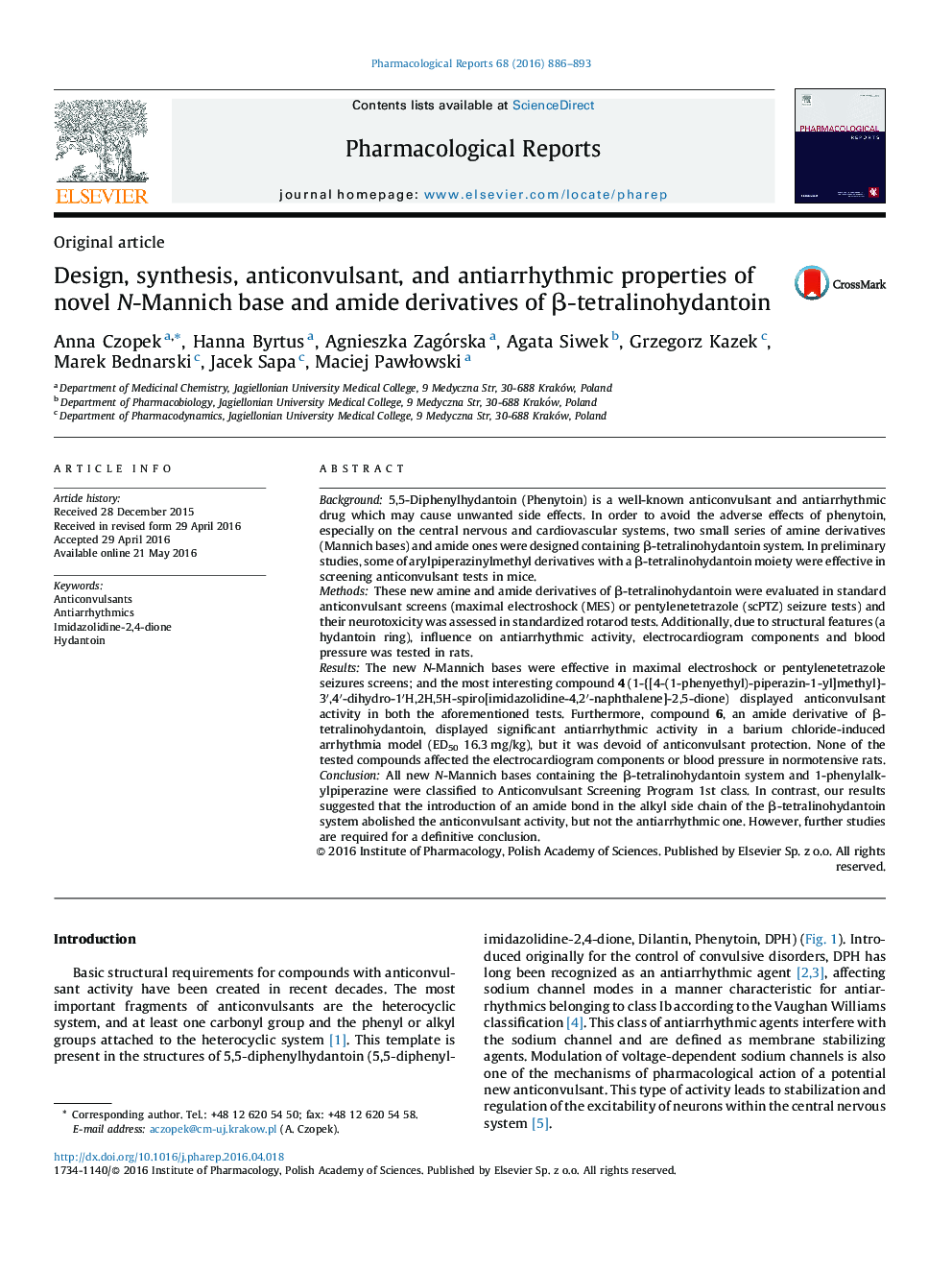| کد مقاله | کد نشریه | سال انتشار | مقاله انگلیسی | نسخه تمام متن |
|---|---|---|---|---|
| 2010674 | 1066986 | 2016 | 8 صفحه PDF | دانلود رایگان |

Background5,5-Diphenylhydantoin (Phenytoin) is a well-known anticonvulsant and antiarrhythmic drug which may cause unwanted side effects. In order to avoid the adverse effects of phenytoin, especially on the central nervous and cardiovascular systems, two small series of amine derivatives (Mannich bases) and amide ones were designed containing β-tetralinohydantoin system. In preliminary studies, some of arylpiperazinylmethyl derivatives with a β-tetralinohydantoin moiety were effective in screening anticonvulsant tests in mice.MethodsThese new amine and amide derivatives of β-tetralinohydantoin were evaluated in standard anticonvulsant screens (maximal electroshock (MES) or pentylenetetrazole (scPTZ) seizure tests) and their neurotoxicity was assessed in standardized rotarod tests. Additionally, due to structural features (a hydantoin ring), influence on antiarrhythmic activity, electrocardiogram components and blood pressure was tested in rats.ResultsThe new N-Mannich bases were effective in maximal electroshock or pentylenetetrazole seizures screens; and the most interesting compound 4 (1-{[4-(1-phenyethyl)-piperazin-1-yl]methyl}-3′,4′-dihydro-1′H,2H,5H-spiro[imidazolidine-4,2′-naphthalene]-2,5-dione) displayed anticonvulsant activity in both the aforementioned tests. Furthermore, compound 6, an amide derivative of β-tetralinohydantoin, displayed significant antiarrhythmic activity in a barium chloride-induced arrhythmia model (ED50 16.3 mg/kg), but it was devoid of anticonvulsant protection. None of the tested compounds affected the electrocardiogram components or blood pressure in normotensive rats.ConclusionAll new N-Mannich bases containing the β-tetralinohydantoin system and 1-phenylalkylpiperazine were classified to Anticonvulsant Screening Program 1st class. In contrast, our results suggested that the introduction of an amide bond in the alkyl side chain of the β-tetralinohydantoin system abolished the anticonvulsant activity, but not the antiarrhythmic one. However, further studies are required for a definitive conclusion.
The new N-Mannich bases and amide derivatives of β-tetralinohydantoin have been synthesized and their pharmacological properties were evaluated in respective animal models. All Mannich bases exhibited anticonvulsant activity but only compound 4 (1-{[4-(1-phenyethyl)-piperazin-1-yl]methyl}-3′,4′-dihydro-1′H,2H,5H-spiro[imidazolidine-4,2′-naphthalene]-2,5-dione) was active both in the MES and scPTZ test. Among amide derivatives, compound 6 displayed significant antiarrhythmic properties (ED50 = 16.3 mg/kg).Figure optionsDownload as PowerPoint slide
Journal: Pharmacological Reports - Volume 68, Issue 5, October 2016, Pages 886–893